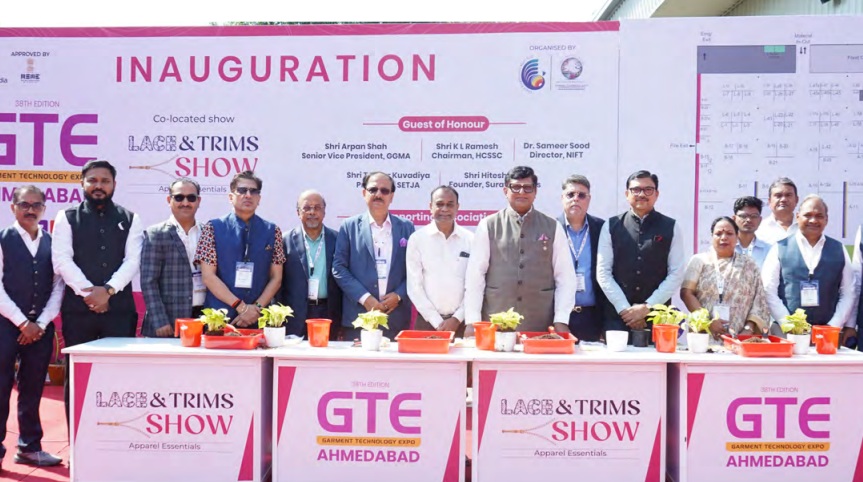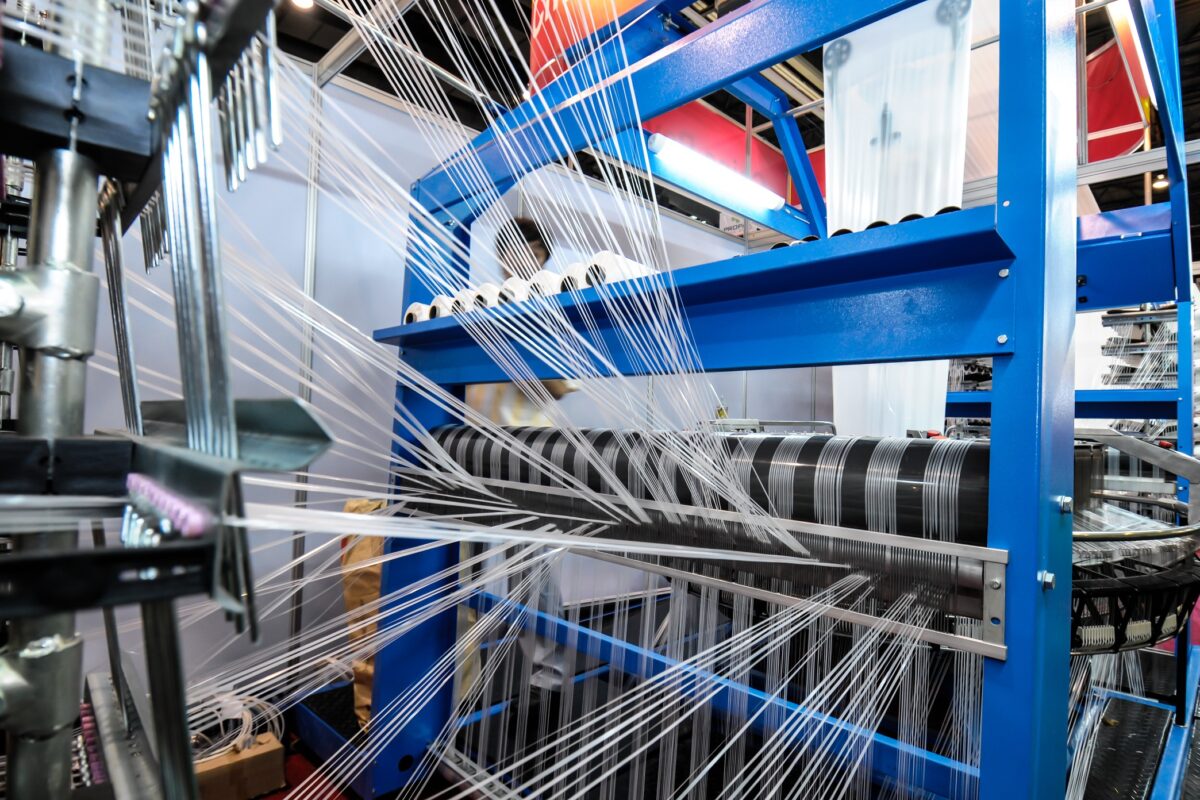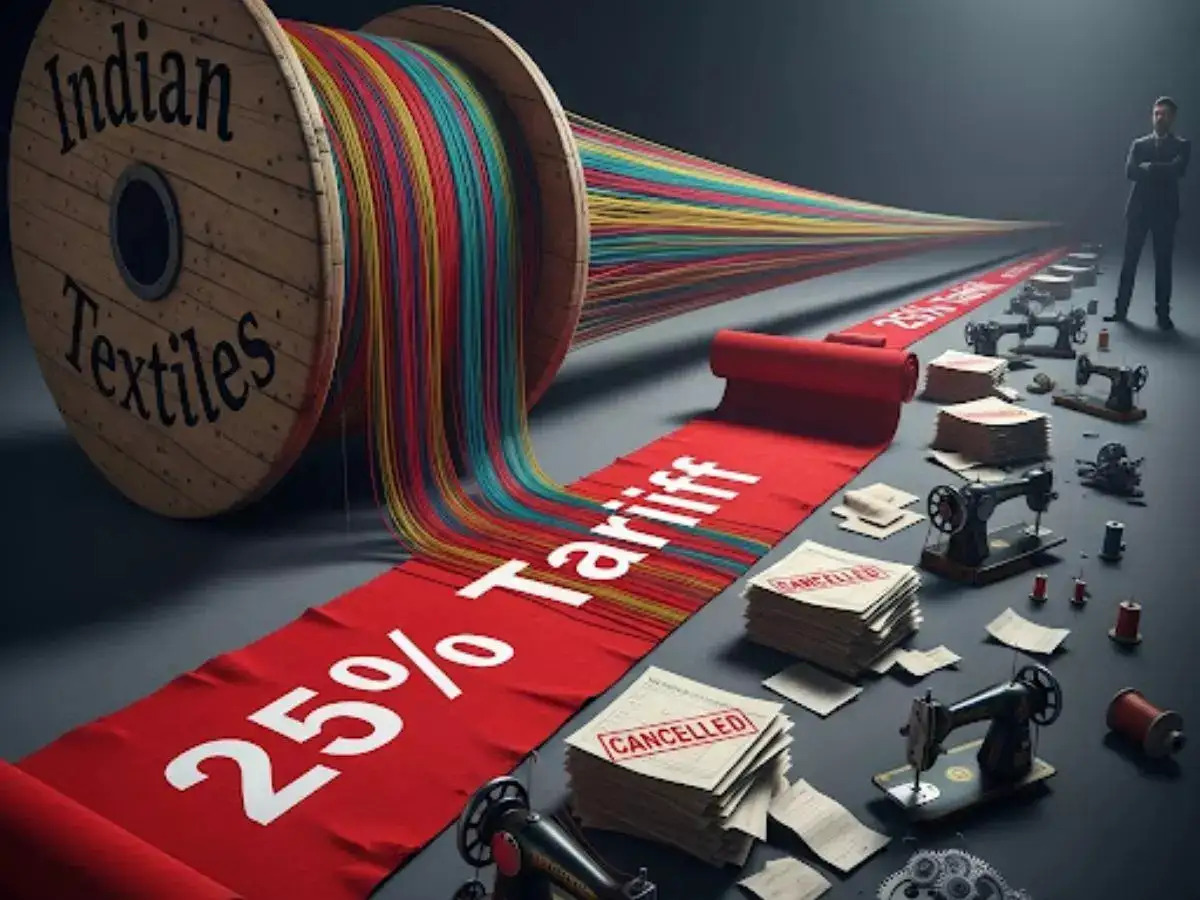FW
Lectra has announced the launch of its new FocusQuantum airbag cutting solutions. Designed to enable suppliers to deliver airbags to carmakers on time, FocusQuantum represents a major breakthrough in airbag manufacturing.
It enables fully streamlined operations meeting the stringent requirements of the uncompromising airbag manufacturing process. The zero-defect production made possible by the state-of-the-art laser cutting solution allows road safety to be incorporated upstream in the value chain through complete control over cutting quality.
FocusQuantum is a comprehensive airbag solution range, combining high-performance laser cutters for both one-piece woven (OPW) and flat airbags, as well as a purpose-built software suite and a full range of value-added professional services covering implementation, change management and support, to ensure operational excellence in the cutting room.
These laser cutter range offers more than twice the productivity of solutions currently on the market, together with unmatched precision and enhanced reliability of predictive maintenance, enabling a high level of manufacturing excellence at an optimal cost per airbag. The ergonomically designed solution optimizes material reloading and the gathering of cut parts for even greater operational efficiency.
The FocusQuantum laser-cutters, software suite and full range of value-added professional services will be available starting in January 2016.
www.lectra.com
Hosaf, the South African producer of PET resin since 1998, has entered into an agreement with Chemtex and Polymetrix to increase the capacity of its PET resin plant at South Africa by about 88 per cent. Chemtex and Polymetrix will provide the technology package, design and equipment for the plant. It currently produces 1,28,000 metric tons of finished product on an annual basis. This expansion will enable Hosaf to increase its capacity to about 2,40,000 metric tons per annum.
This project will deliver high quality PET resin with enhanced plant economics and will position Hosaf as a highly competitive and premier provider of PET resin in the growing regional market.
Chemtex is a global engineering and technology company. It specialises in delivering value added project solutions for its clients in the polymer and fibers, chemicals, energy and environmental industries. The company has successfully delivered hundreds of projects worldwide.
Polymetrix is a worldwide engineering group active in the design and construction of plants and equipment, with headquarters in Switzerland. With its vast technological expertise and engineering know-how, Polymetrix is an international leader in PET decontamination and SSP plant engineering.
Balkrishan (BK) Goenka of Welspun Group had to roll back his ambitious backward integration plan between 2009 and 2011, when the company decided to diversify into other business areas such as sponge iron, steel slabs, thermal power and infrastructure. The reason was adverse impact of diversification on its earnings and contraction of the group’s market value. However, today he has managed to bounce back through restructuring his business empire.
Further, an order passed by markets regulator Sebi, banning some promoter entities of Welspun from participating in the capital markets due to alleged stock manipulation, added to the company’s woes, however, Goenka worked around the challenges faced by his company. He chalked out a strategy to bring down losses by selling assets and exiting non-performing businesses. All his efforts have resulted in today’s Welspun that enjoys a healthier balance sheet, a better debt profile, positive earnings growth in its textiles business.
Since September 22, 2013, Welspun India (WIL)—the textiles company that manufactures terry towels and home linen—has witnessed its share price multiply almost 14-fold from Rs 61.75 (on September 22, 2013) to Rs 832.20 per share (on September 22, 2015).
www.welspunindia.com
According to Commerce Minister Tofail Ahmed, no extension will be granted to Accord and Alliance, two international bodies to monitor Bangladesh’s readymade garment factory conditions. Speaking at the inauguration ceremony of an international exhibition on building and fire safety at the Bangabandhu International Conference Centre in Dhaka, he said that the country’s garment factories have undergone a transformation.
According to Ahmed, most of the garment factories now adhere with standards set for them and workers are working in a safe and job-friendly environment. He added that the calamities caused by fire at Tazreen Fashions and the Rana Plaza building collapse have created a wrong impression about Bangladesh in many importing countries.
Accord and Alliance have been allowed to carry out factory inspections in Bangladesh by July 2018. These two bodies were formed by international buyers of Bangladeshi garments with garment manufacturers to improve working conditions and safety standards. They began work in 2013 for a contract term of five years.
Alliance has so far inspected 587 factories and trained the workers employed by many of them. Accord has inspected 1,289 factories. The minister said that several countries do not allow such bodies to inspect factories. They are denied visa if they express their intention to inspect factories in those countries. “But in our country, we have Alliance and Accord. They are trying to have their terms extended. But that will not be allowed. They will not get even a day’s extension,” he asserted.
Along with the Bengal Global Business Summit (BGBS) to be held on January 8 and 9, 2016, Department of MSME and Textile, Government of West Bengal along with Indian Chamber of Commerce is organising TEXPO Bengal – an exposition and conference on textiles and clothing. The aim of this event is to attract investments in the state’s textile and apparel segment.
West Bengal has a long history and tradition in textiles. The sector provides both indirect and direct employment to a large number for people, with potential to be a major contributor in the India’s economic growth. The state has some unique strengths, which makes it ideal to become a clothing hub of the country. With TEXPO Bengal, the organisers would not only provide details about the textile parks being established in the state, but also about all the incentives available to make investments in the state’s textile industry.
Leading associations from across the country will be present as during the event. Leading textile industry experts are also invited to hold a discussion related to issues and challenges being faced by the industry and to develop policies to ensure better engagement with the industry.
The West Bengal government initiated a comprehensive textile policy in 2013 to promote investments in the state. In order to further the aim of making the state a clothing hub, the Integrated Textile Development Project (ITDP) was launched in 2015. The ITDP is expected to promote 11 textile parks around Kolkata City and provide a readymade platform for industry to develop and expand its potential.
BGBS is expected to announce new policies and investments in the state to promote industrial and infrastructure development. The event is an ideal platform for the industry and the government to showcase their strengths, highlight business opportunities, and facilitate knowledge dissemination.
www.westbengal.gov.in
www.tttextiles.com
Sighting decline in world cotton consumption and the demand for higher Minimum Support Price for cotton from some states, the Indian government is planning to introduce Direct Benefit Transfer scheme for the cotton farmers.
Speaking at the inauguration of the 74th Plenary of the International Cotton Advisory Committee in Mumbai, Union Minister of State for Textiles, Santosh Kumar Gangwar said that the Centre has kept the interest of cotton growers in mind and increased the Minimum Support Price (MSP) for long staple cotton to Rs 4,100 for the 2015-16 marketing season.
A pilot project under the Direct Payment Deficiency System (DPDS) for paying MSP guarantee for the cotton farmers has already been initiated at Hinganghat in Maharashtra, under which the farmers will directly get the amount which is the difference between the MSP and the market price, when the market price falls below the MSP. For availing of the benefit, farmers would have to present proof of cotton sold at Agriculture Produce Market Committee yards and ownership document, yield estimation and other details. If the pilot is successful, the DPDS would then be extended to all cotton growing regions.
Texmin.nic.in
The $41-billion Aditya Birla Group aims to scale up and expand the LIVA Accredited Partners Forum (LAPF) initiative to improve the textile value chain by reaching out to more players across India including those from the rural hubs and small towns.
“This is an attempt to bring all textile stakeholders on a single platform and promote innovation and quality, and make India the world’s leading cloth manufacturing hub in line with the Make in India strategy. India has the potential and can compete with any country including China,” said Prakash Nedungadi, President, Consumer Insights and Brand Development, Aditya Birla Group, adding, “This initiative is not just limited to cities, but it will also include small towns and rural players. He was speaking at a stakeholders’ conclave held on December 4, 2015 in Coimbatore. The summit, involving over 200 leading textile players mainly from the Southern States was held as part of the company’s efforts to support design development, technical skills, marketing and buyer link support, under LAPF initiative.
Birla Cellulose –the pulp and fibre manufacturing division of Grasim –has tied up with Mumbai-based Netcarrots to implement a customer relationship marketing programme for the stakeholders. LAPF members include spinners, weavers, knitters and fabricators, with major participation from textile hubs such as Tirupur, Erode, Ludhiana, New Delhi, Kolkata, Surat and Bhiwandi, among others. The LAPF programme is linked to Birla Cellulose’s fibre brand LIVA which was launched in March this year in line with the group chairman Kumar Mangalam Birla’s vision of establishing connect with the end consumer.
The stakeholders also explained how they were benefiting from the collaboration with Aditya Birla Group, the world’s largest manufacturer of viscose staple fibre (VSF). The company has also tied up with Bombay Textile Research Association (BTRA) to undertake quality improvement programs and stringent audits for the partners. The partners are shortlisted for the programme after they comply with eight stringent parameters. After the selection, the company will equip them with five major services, including design and development, technical services, vendor management, marketing and buyer link support and market intellegence. Leading brands in the country such as Pantaloons, Van Heusen, Allen Solly, People, Global Desi, Lifestyle, Melange, Shoppers Stop, Reliance trends, Wills Lifestyle, Desi Belle Chemistry, 109F, Fusion Beats, FBB, Etnicity and Max already use LIVA branded fabric.
www.adityabirla.com
Latest data suggests that India’s overall textile and garment exports including jute, coir, handicrafts and handlooms will not only miss the initial official growth target of 15 per cent for 2014-15 but fall short of the 5 per cent expansion rate. The government had initially set the export target at $45 billion for 2014-15, compared with the actual exports of $39.3 billion in the previous fiscal.
The latest official data points out that the overall textile and garment exports has grown by just 1.7 per cent touching $35.29 billion during the April-February period, compared with $34.72 billion a year before, while imports have risen by 14.2 per cent during the period. Exports of fibres declined over 36 per cent up to February last fiscal, while some other textile items witnessing just a 0.4 per cent rise, owing to low demand from China. Exports of raw cotton, including waste, dropped almost 47 per cent during the April-February period from a year before. The only major growth se4gment has been the garment exports, witnessing a 13.4 per cent rise between April and February from a year earlier.
Industry experts such as DK Nair, the secretary-general of the Confederation of the Indian Textile Industry suggest that Indian exporters should explore opportunities in countries such as Bangladesh, Vietnam and Cambodia, who import textile items in large volumes for converting them into finished goods.
Imports of textiles increased to $5.57 billion between April and February, compared with $4.87 billion a year before. Declining textile export also impacted industrial production data. According to the index of industrial production data, the textile segment grew just 2.4 per cent from the April-February period from a year before.
www.citiindia.com
G-III Apparel Group announcing its operating results for the third quarter of fiscal 2016 ended October 31, 2015 said that net sales increased by 12 per cent to $910 million from $812 million in the year-ago period.
The company's net income for the third quarter increased to $87.2 million, or $1.87 per diluted share, from $80.6 million, or $1.76 per diluted share, in the prior year's comparable period. On an adjusted basis, excluding items resulting in other income equal to $0.02, per share in the quarter ended October 31, 2015 and $0.22 per share in the quarter ended October 31, 2014, non-GAAP net income per diluted share for the third quarter increased to$1.85 from $1.54 in the prior year's third quarter.
Commenting on the results, Morris Goldfarb, G-III's Chairman, Chief Executive Officer and President, said, "We are pleased to report a strong third quarter. Our organic sales and profit increase clearly differentiate us as a leader in our industry. We achieved this performance in a challenging market environment. Although outerwear is off to a slow start at retail, our dress, sportswear and handbag businesses performed well in the quarter."
The company also revised its prior guidance for the full fiscal year ending January 31, 2016. It is continuing to forecast net sales of approximately $2.40 billion. It now expects net income to be between $124 million and $131 million, or a range between $2.67 and $2.82 per diluted share, compared to its previous guidance of net income between $129 million and $134 million, or a range between $2.78 and $2.88 per diluted share, and to net income of $110.4 million, or $2.48 per diluted share in the fiscal year ended January 31, 2015.
The company is now projecting adjusted EBITDA for fiscal 2016 to increase between 22 per cent and 28 per cent to between approximately $227 million and $238 million compared to adjusted EBITDA of $186.6 million in fiscal 2015 and from its previous guidance of adjusted EBITDA of between approximately$237 million and $245 million.
www.g-iii.com
Greg Constable, one of the world's most renowned cotton scientists, has been named ‘2015 Researcher of the Year’ by the International Cotton Advisory Committee (ICAC).
The announcement was made during the inaugural session of ICAC's 74th Plenary Meeting and recognised Constable for the advancements he has made in cotton breeding and crop management systems. His knowledge of cotton physiology has been instrumental in the development of many new cotton varieties, several of which are used extensively in cotton-producing countries around the world.
“Around the world, scientists have made great strides in reducing cotton's environmental footprint, which has been cut in half over the last 20 years or so," Constable said, adding, “I believe that reductions in the usage of pesticides and herbicides, combined with the major gains we've made in water use efficiency, have brought us to the point where cotton has a smaller impact on the environment than synthetic fibres like polyester do.
" Constable has spent much of his 46-years career working for The Commonwealth Scientific and Industrial Research Organization (CSIRO), one of Australia's primary scientific research organisations, and has achieved an extensive list of accomplishments during that time including inaugural chair of the first World Cotton Research Conference, which was held in Brisbane in 1994, first and current Chairman of the International Cotton Researchers Association, and key organiser of the first meeting of cotton breeders and molecular biologists in Australia, which eventually became the International Cotton Genome Initiative.
www.icac.org












